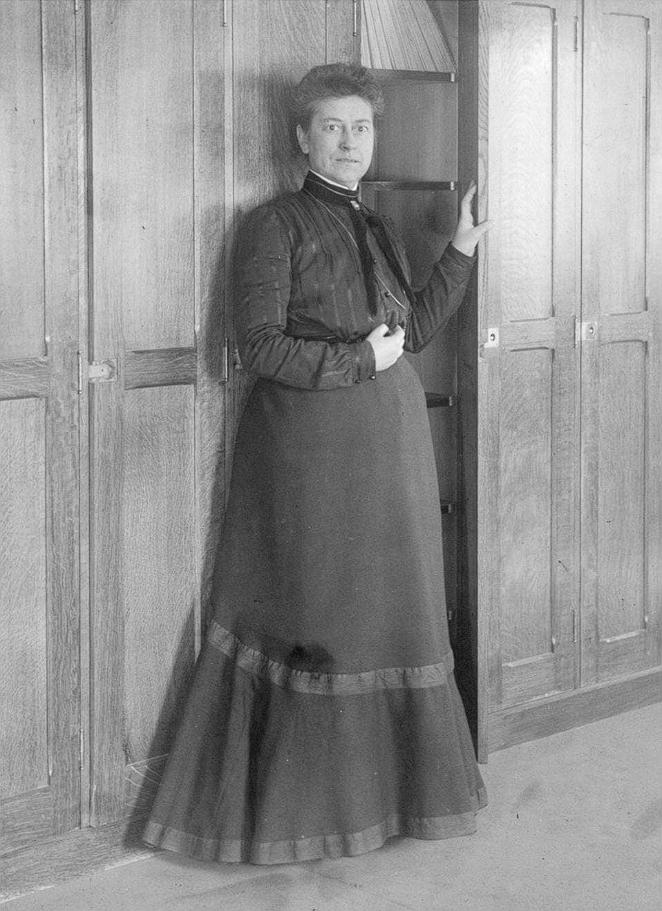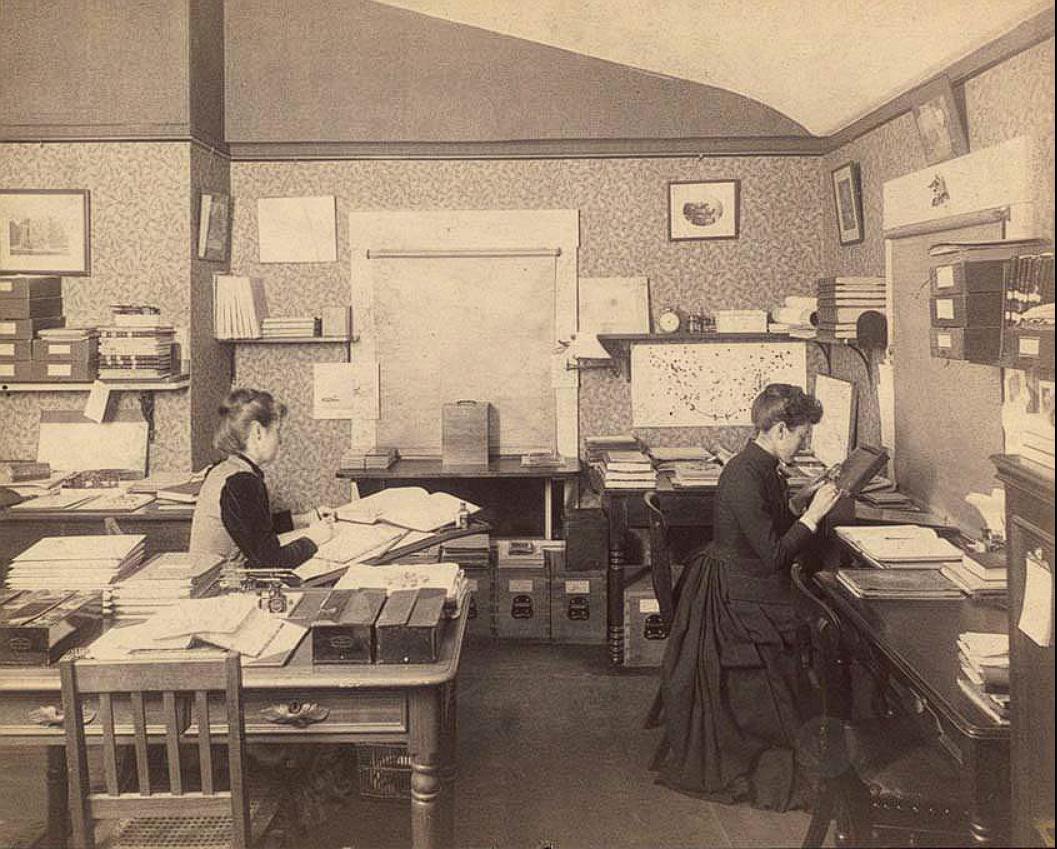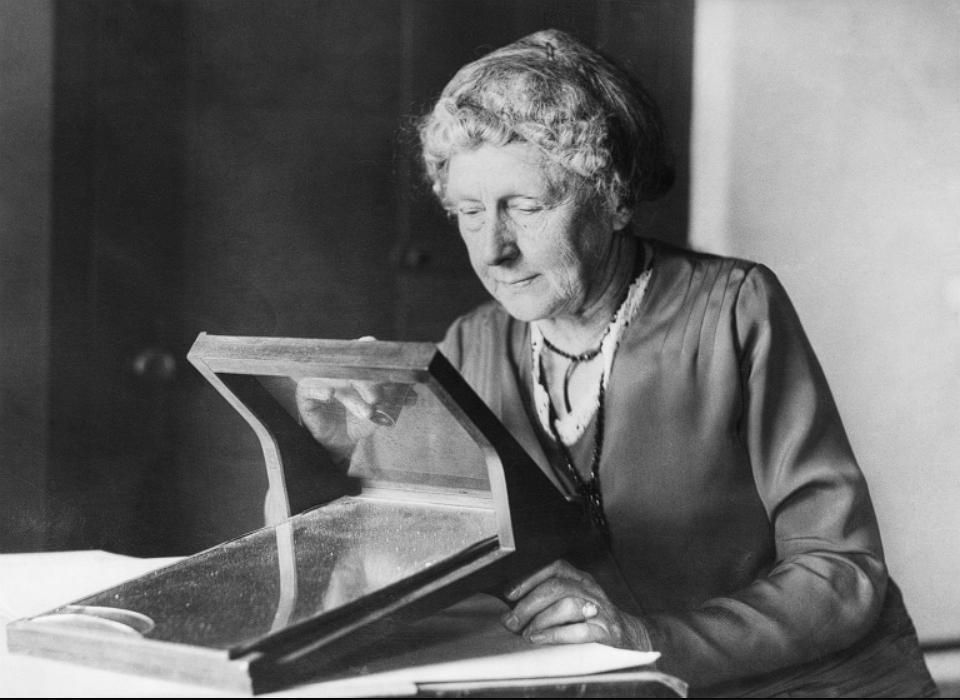The Remarkable Journey of a Trailblazing Astronomer
Defying Expectations from the Start
Williamina Paton Stevens Fleming was born in 1857 in Dundee, Scotland, into a world where women’s roles were largely confined to domestic life. However, from an early age, she demonstrated an exceptional intellect and a natural curiosity that set her apart. By 14, she was already working as a teacher, a rare achievement for a young girl at the time.
Her life, however, took an unforeseen turn when she married and moved to the United States. What should have been the start of a stable future became a struggle when her husband abandoned her, leaving her alone with their child in a foreign country. Forced to find work, she took a job as a housekeeper in the home of Edward Pickering, director of the Harvard College Observatory.

From Housekeeper to Harvard Astronomer
A Bold Statement That Changed Everything
As the head of Harvard’s observatory, Edward Pickering grew increasingly frustrated with the men working under him. One day, in exasperation, he is said to have declared, “My Scottish maid could do better!” It was meant as an insult, but it turned out to be a revelation. Recognizing Williamina’s intelligence and meticulous nature, Pickering decided to give her a chance.
Proving Her Brilliance in the Harvard Computers
In 1881, Williamina Fleming joined the observatory, becoming the first in a group of women known as the Harvard Computers. Their job was to analyze photographic plates of the night sky, identifying and classifying stars based on their brightness and spectral characteristics. Despite lacking formal scientific training, Williamina quickly excelled, demonstrating an extraordinary ability to categorize celestial bodies with precision.
Discovering the Secrets of the Cosmos
Williamina’s work soon led to significant astronomical discoveries. She identified over 10,000 stars, discovered ten novas, 59 nebulae, and 310 variable stars. Her meticulous observations and ability to recognize patterns made her one of the most valuable members of the observatory’s team.

The Harvard Classification System: A Lasting Legacy
Creating a System for the Stars
One of Williamina Fleming’s most groundbreaking contributions was the development of the Harvard Classification System. This method organized stars based on their spectra, creating a structured way to classify celestial bodies. Her work laid the foundation for the modern stellar classification system still used by astronomers today.
A System That Stood the Test of Time
The classification system she helped pioneer became a crucial tool for astronomers worldwide. By identifying spectral differences among stars, she provided a method to understand their composition, temperature, and evolution. This work was later refined by Annie Jump Cannon, another Harvard Computer, but Williamina’s initial framework was the key to its success.
A Legacy Beyond the Numbers
While her system revolutionized astronomy, Williamina’s greatest impact was proving that women could contribute significantly to scientific research. At a time when female scientists were often overlooked, her meticulous work forced the academic world to take notice.

Breaking Barriers for Women in Science
Becoming a Recognized Scientist
Williamina Fleming’s expertise did not go unnoticed. She became the first American woman to be named an honorary member of the Royal Astronomical Society in 1906, a rare honor at the time. Her achievements stood as proof that women could excel in fields dominated by men.
Advocating for Women in Astronomy
Throughout her career, Williamina spoke out about the lack of recognition and opportunities for women in science. She argued that female astronomers deserved the same respect, pay, and opportunities as their male counterparts. Though change was slow, her voice helped pave the way for future generations of women in STEM.
Inspiring Future Generations
Williamina’s story is one of perseverance, intelligence, and an unyielding belief in her abilities. She transformed from a housekeeper to a leading astronomer, showing that greatness can emerge from the most unexpected places. Today, her contributions remain a fundamental part of astrophysics, inspiring countless women to follow in her footsteps.
Conclusion
Williamina Paton Stevens Fleming not only classified thousands of stars—she illuminated the path for future astronomers, proving that talent knows no gender. Her work continues to shape modern astronomy, and her story remains a powerful reminder that sometimes, the brightest stars are the ones who refuse to be overlooked.
